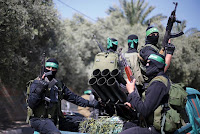Preparedness for Domestic Terrorism
Training and Education: CERT programs provide essential training to community members on disaster preparedness and response. This training can be adapted to include recognizing signs of domestic terrorism, understanding the threat landscape, and knowing how to report suspicious activities to law enforcement.
Communication Skills: CERT members are equipped with effective communication skills, which can be crucial in disseminating information during an act of domestic terrorism. They can serve as vital conduits between first responders and the community, helping to manage panic and coordinate responses.
Medical Support: CERT training often includes basic medical skills. In the event of domestic terrorism, CERT members can provide immediate medical assistance to victims before professional responders arrive, potentially saving lives.
Challenges at the Intersection
Recognizing Threats: Identifying domestic terrorism threats can be challenging, as they often involve radicalization within the community. CERT members must be trained to recognize signs of extremist ideologies and behaviors.
Security Concerns: Engaging CERT members in counterterrorism efforts raises security concerns. Balancing community engagement with the need to prevent potential insider threats is a delicate task.
Communication and Coordination: Effectively integrating CERT into counterterrorism strategies requires seamless communication and coordination with law enforcement agencies. Establishing protocols for information sharing and response procedures is crucial.
CERT as a Pillar of Community Resilience
Building Trust: CERT programs foster trust between community members and responders. This trust can be invaluable in encouraging reporting of suspicious activities related to domestic terrorism.
Rapid Response: CERT members are often among the first on the scene in disaster situations. In the context of domestic terrorism, their quick response can mitigate casualties and provide initial support.
Community Healing: Beyond immediate response, CERT volunteers can play a crucial role in community healing and recovery after a domestic terrorism incident. Their familiarity with the community can provide comfort and support to victims.
Conclusion
The intersection of Community Emergency Response Teams and domestic terrorism underscores the importance of preparing communities for multifaceted threats. While CERT programs traditionally focus on natural disasters, their adaptability makes them a valuable asset in combating domestic terrorism. By incorporating counterterrorism training, addressing challenges, and emphasizing community resilience, CERTs can contribute to enhancing overall security and preparedness, ensuring that communities are better equipped to respond to a wide range of emergencies, including acts of domestic terrorism.


























